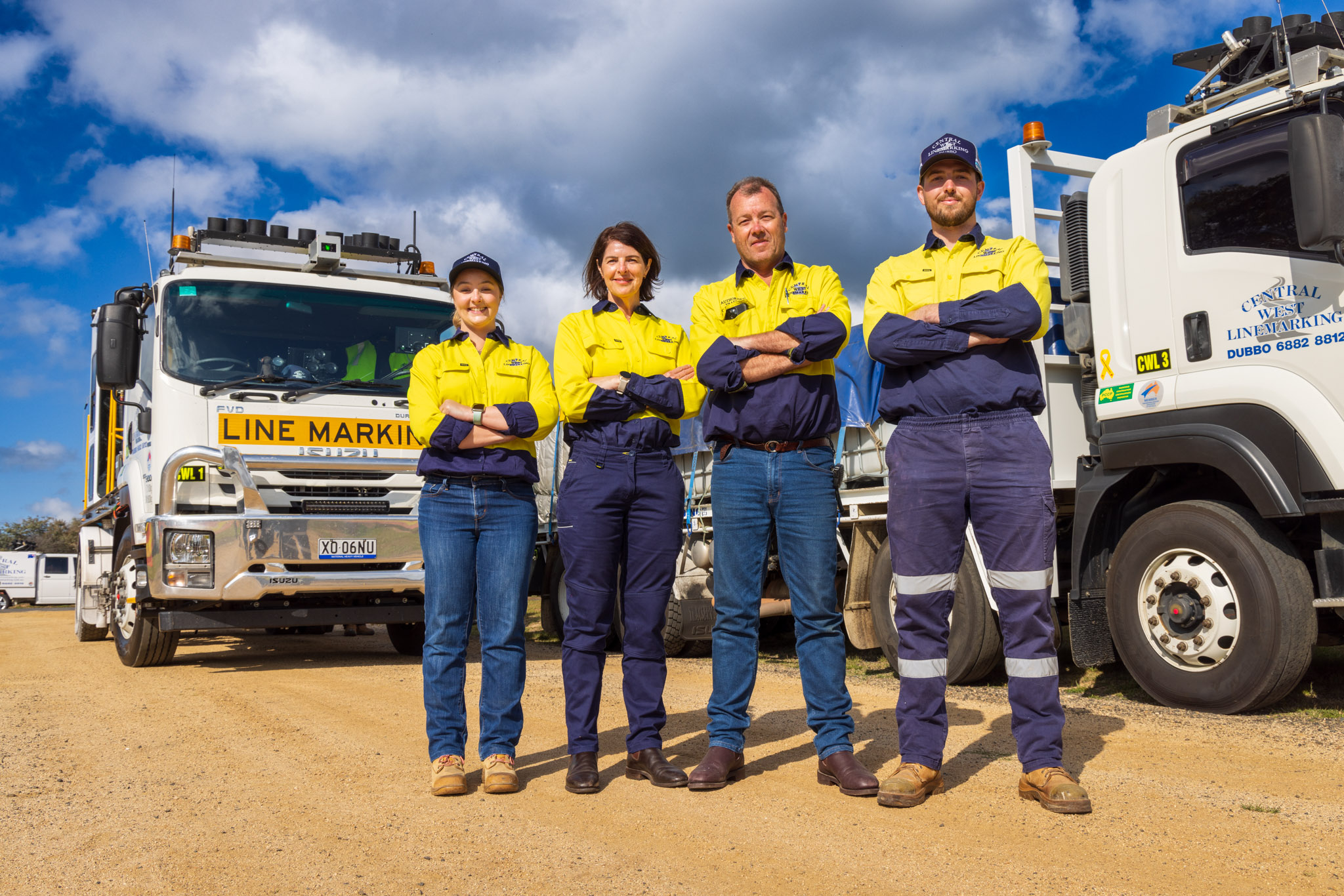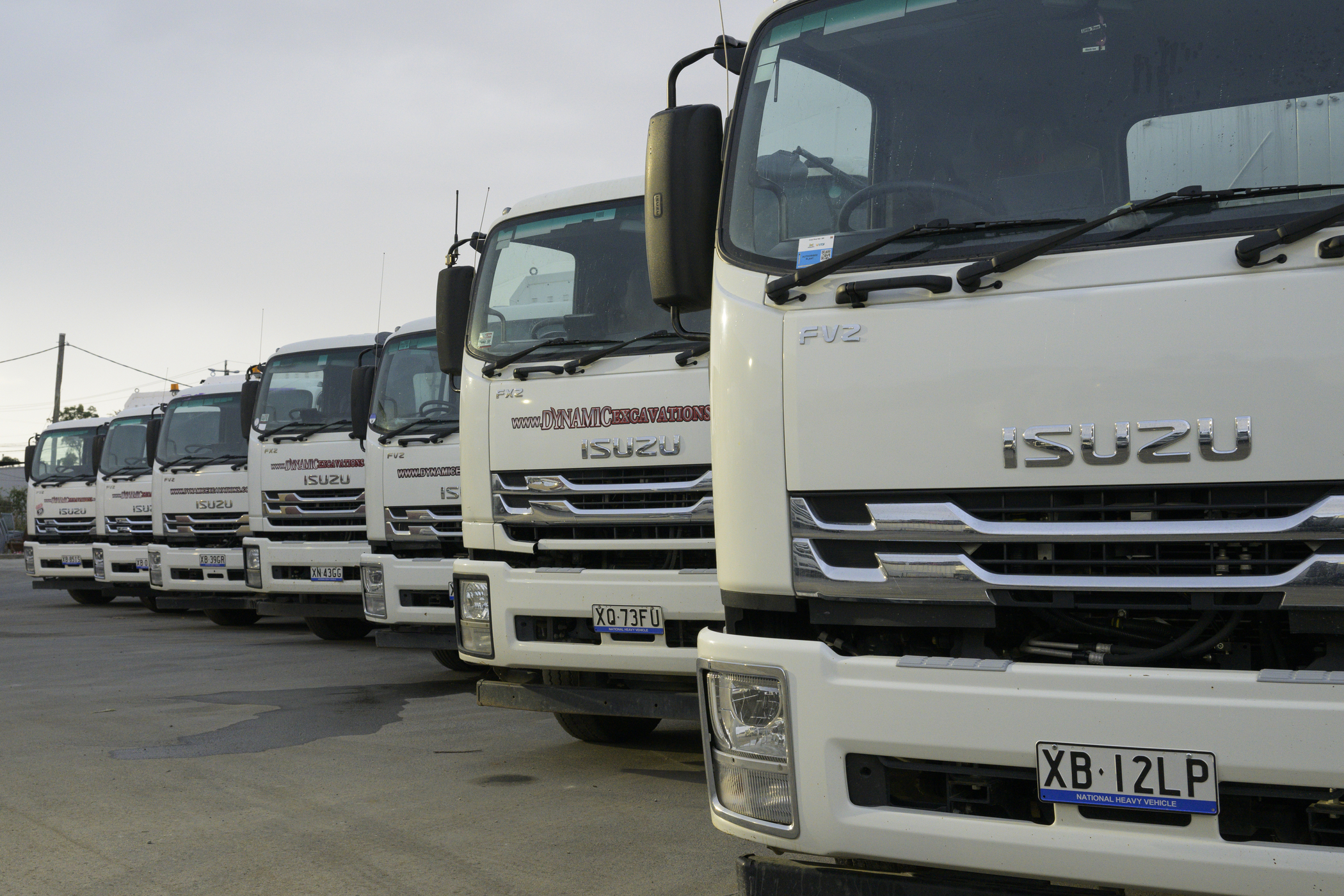ALL YOU NEED TO KNOW: 4X4 AND ALL-WHEEL DRIVE TRUCKS

 4x4s
Four-wheel drive vehicles distribute power equally amongst all four wheels on both front and rear axles. This makes them perfectly suited for navigating difficult terrain with uneven, shifting or slippery ground. With all four wheels turning simultaneously, and at the same speed, the tyres are better able to grip and lift the vehicle out of tricky situations.
4x4 systems come in part-time and full-time arrangements. As the name suggests, part-time 4x4 vehicles run as a two-wheel drive (2WD or 4x2) on sealed roads or surfaces. It is only when the services of all four wheels are needed, that you flick the switch (in most cases), the hubs will lock, and all four wheels are engaged. When 4x4 is engaged the front and rear axles are locked to ensure the best traction. In this scenario, the vehicle must not be driven on sealed roads.
AWDs
AWD systems supply separate power-ratios to front and rear axles, depending on traction and ground conditions. Handy for both unsealed and sealed roads, AWD vehicles can navigate a variety of terrains capably—but are not suited to the upper extremes of 4x4 driving (such as traversing deep ruts, climbing steep rocky ascents or moving through deep sand). This is because AWD vehicles do not have the ability to lock the front and rear axles for severe off-road operation.
4x4s
Four-wheel drive vehicles distribute power equally amongst all four wheels on both front and rear axles. This makes them perfectly suited for navigating difficult terrain with uneven, shifting or slippery ground. With all four wheels turning simultaneously, and at the same speed, the tyres are better able to grip and lift the vehicle out of tricky situations.
4x4 systems come in part-time and full-time arrangements. As the name suggests, part-time 4x4 vehicles run as a two-wheel drive (2WD or 4x2) on sealed roads or surfaces. It is only when the services of all four wheels are needed, that you flick the switch (in most cases), the hubs will lock, and all four wheels are engaged. When 4x4 is engaged the front and rear axles are locked to ensure the best traction. In this scenario, the vehicle must not be driven on sealed roads.
AWDs
AWD systems supply separate power-ratios to front and rear axles, depending on traction and ground conditions. Handy for both unsealed and sealed roads, AWD vehicles can navigate a variety of terrains capably—but are not suited to the upper extremes of 4x4 driving (such as traversing deep ruts, climbing steep rocky ascents or moving through deep sand). This is because AWD vehicles do not have the ability to lock the front and rear axles for severe off-road operation.
 Fit-for-purpose
Whether you’re in the truck or ute camp, finding a suitable work vehicle that can reliably carry the crew and equipment where they need to get to—no matter how tough the going gets—is an absolute necessity for off-road operators and businesses.
Aside from the ability to navigate difficult terrain, an off-road work vehicle is often considered with the double-up work vs weekend scenario in mind. In this situation, a truck might not seem like the most attractive or obvious choice. But those serious about a genuine work vehicle with payload and towing capacity, and not kidding themselves about the effort of taking the toolboxes off every Friday night—a 4x4 or AWD truck could be suited best.
Payload
Payload capacity is something we rarely think about if we can help it. If it fits, it stays, right?
But as much as we don’t enjoy crunching the numbers, payload is incredibly important to consider as it has an impact on crucial safety and operating factors, and whole-of-life costs including fuel efficiency, vehicle lifespan and safety.
A work vehicle should never exceed the specified gross combination mass (GCM) rating, but unfortunately, overloading is an all too common occurrence. There are significant fines for overloading, and even minor overloading of a vehicle (just a little extra in that ute?) can cop you a minimum $447 infringement penalty—with major infringement fines surpassing $10,000. Check the National Heavy Vehicle Regulator (NHVR) website for more details.
Allowing a payload safety buffer can provide both peace of mind and make sure you stay on the right side of Chain of Responsibility (CoR) laws. It can also prevent things like banana-bends in the chassis, excessive fuel consumption and savage wear and tear on componentry such as brakes and transmissions.
Fit-for-purpose
Whether you’re in the truck or ute camp, finding a suitable work vehicle that can reliably carry the crew and equipment where they need to get to—no matter how tough the going gets—is an absolute necessity for off-road operators and businesses.
Aside from the ability to navigate difficult terrain, an off-road work vehicle is often considered with the double-up work vs weekend scenario in mind. In this situation, a truck might not seem like the most attractive or obvious choice. But those serious about a genuine work vehicle with payload and towing capacity, and not kidding themselves about the effort of taking the toolboxes off every Friday night—a 4x4 or AWD truck could be suited best.
Payload
Payload capacity is something we rarely think about if we can help it. If it fits, it stays, right?
But as much as we don’t enjoy crunching the numbers, payload is incredibly important to consider as it has an impact on crucial safety and operating factors, and whole-of-life costs including fuel efficiency, vehicle lifespan and safety.
A work vehicle should never exceed the specified gross combination mass (GCM) rating, but unfortunately, overloading is an all too common occurrence. There are significant fines for overloading, and even minor overloading of a vehicle (just a little extra in that ute?) can cop you a minimum $447 infringement penalty—with major infringement fines surpassing $10,000. Check the National Heavy Vehicle Regulator (NHVR) website for more details.
Allowing a payload safety buffer can provide both peace of mind and make sure you stay on the right side of Chain of Responsibility (CoR) laws. It can also prevent things like banana-bends in the chassis, excessive fuel consumption and savage wear and tear on componentry such as brakes and transmissions.
 Most top-of-the-line utility models offer a 3,200 kg gross vehicle mass (GVM) rating and a GCM around 6,000 kg. However, in many cases the rated towing mass of passenger utilities does not allow for significant payload in the tray while towing.
In the world of light-and medium-duty 4x4 and AWD trucks, a 4,500 kg to 7,500 kg GVM and 8,000 to 11,000 kg GCM range can be typically expected. There are also lots of options weighing in at a handy 4,500 kg gross vehicle mass (GVM), meaning they can be driven on a standard car licence during work and at play.
The right off-road choice
There are a lot of factors to take into account when choosing an off-road work vehicle, and as always it’s worth doing some research before landing in the dealership showroom.
In our next blog, we take a look at how 4x4 and AWD trucks are working in action for thousands of businesses all over Australia.
Looks and badges aside, it is critical to address questions about how your vehicle will work for you on the job. Will you need something that can carry weight and extra crew? Will you find yourself in off-road conditions? What transmission option will give you the most confidence in differing situations and environments?
When you’ve nailed down the specifics, and it’s time to turn that work machine into your dream weekend holiday-maker, keep in mind how much easier life will be if you’re able to keep the toolboxes in the back, load your toys and camping gear and tow your boat—all at the same time.
Truck vs Ute - everyone has an opinion on this debate. Read more here!
Most top-of-the-line utility models offer a 3,200 kg gross vehicle mass (GVM) rating and a GCM around 6,000 kg. However, in many cases the rated towing mass of passenger utilities does not allow for significant payload in the tray while towing.
In the world of light-and medium-duty 4x4 and AWD trucks, a 4,500 kg to 7,500 kg GVM and 8,000 to 11,000 kg GCM range can be typically expected. There are also lots of options weighing in at a handy 4,500 kg gross vehicle mass (GVM), meaning they can be driven on a standard car licence during work and at play.
The right off-road choice
There are a lot of factors to take into account when choosing an off-road work vehicle, and as always it’s worth doing some research before landing in the dealership showroom.
In our next blog, we take a look at how 4x4 and AWD trucks are working in action for thousands of businesses all over Australia.
Looks and badges aside, it is critical to address questions about how your vehicle will work for you on the job. Will you need something that can carry weight and extra crew? Will you find yourself in off-road conditions? What transmission option will give you the most confidence in differing situations and environments?
When you’ve nailed down the specifics, and it’s time to turn that work machine into your dream weekend holiday-maker, keep in mind how much easier life will be if you’re able to keep the toolboxes in the back, load your toys and camping gear and tow your boat—all at the same time.
Truck vs Ute - everyone has an opinion on this debate. Read more here!



Lead the charge with Australia’s favourite truck.
2025 heralds Isuzu Trucks’ 36th year as market leader.* Number one in more than just sales, though, Isuzu Trucks has an unparalleled dealer support network, customer care program, truck range, and legendary reliability. To get behind the wheel of a winner, get into your nearest Isuzu Trucks Dealer now or visit isuzu.com.au
Learn More



